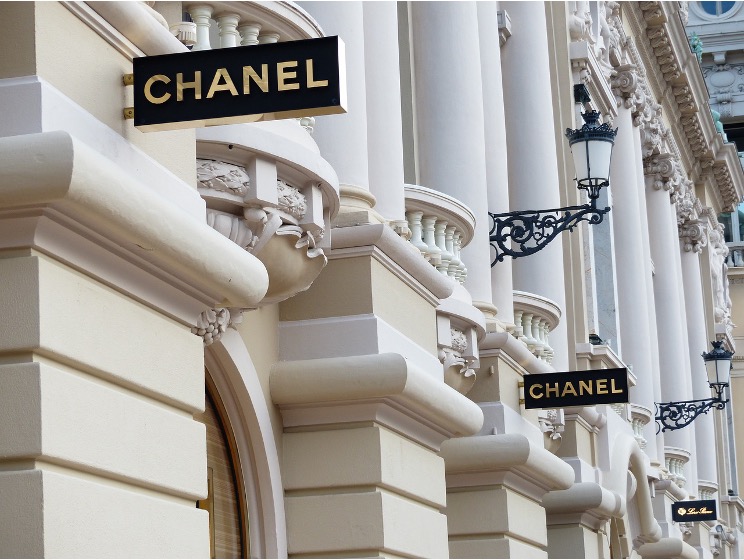By Natasha Patel, Staff Writer

Photo courtesy of pixabay.com
Earlier this year, coveted French luxury fashion house, Chanel, won its lawsuit against retailer What Goes Around Comes Around (“WGACA”) in federal court.[1] The defendant in this matter, WGACA, is a designer reseller that has stores in Manhattan, Los Angeles, Miami, and the Hamptons.[2] In addition, WGACA also maintains and operates an e-commerce website.[3] Retailers such as WGACA and The RealReal authenticate luxury items sold on their platforms.[4] These services provide the buyer with ease of mind that their product is authentic. However, not all luxury brands, including Chanel, are in favor of second-hand marketplaces.[5]
Chanel first filed a complaint against WGACA back in 2018, alleging trademark infringement, unfair competition, false advertising, and the sale of counterfeit goods.[6] WGACA carries various brands, but claims to have “the world’s largest collection of vintage Chanel.”[7] However, Chanel argued that WGACA’s practices, such as these claims, deceived consumers into believing that the retailer had a relationship with Chanel.[8] Besides selling unauthorized Chanel branded goods, WGACA also allegedly sold counterfeit items and used false advertising claims.[9]
Section 1114 of the Lanham Act imposes civil liability on those who reproduce, counterfeit, copy, or imitate registered trademarks to avoid confusion among consumers.[10] However, courts have used the “Polaroid factors” to determine whether a counterfeit trademark presents a likelihood of confusion for there to be infringement.[11] Those factors include: (1) strength of the mark; (2) proximity of goods; (3) similarity of marks; (4) any evidence of actual confusion; (5) marketing channels used; (6) type of goods and degree of care likely to be exercised by purchaser; (7) defendants’ intent in selecting mark; and (8) likelihood of expansion of product lines.[12]
However, under 17 U.S.C. § 109, or the First Sale Doctrine, the purchaser of copywritten or trademarked material has the right to sell, display, or dispose of the material.[13] Under this doctrine, the owner of the copyright or trademark no longer has the right to control the future distribution or resale of the product.[14] This essentially allows resale marketplaces, such as WGACA, to operate legally.
In this matter, Chanel argued that WGACA’s use of Chanel’s trademark, images of founder Coco Chanel, the hashtag “#WGACACCHANEL,” use of Chanel runway shows, and prior Chanel advertising created a false association with Chanel.[15] In doing so, this led to the likelihood of confusion.[16] Chanel’s legal team and David Franklyn, expert witness in the matter and director of the McCarthy Institute for IP and Technology Law, conducted a survey and concluded that confusion among consumers existed.[17] The survey found that 47% of surveyed consumers believed that Chanel was associated with WGACA and 73% believed that WGACA was either an affiliate, partner, collaborator, or authorized reseller of Chanel.[18]
Trademark protection is essential for luxury brands such as Chanel to ensure their reputation among consumers. Not only has this case provided continued protection, but it has also set a precedent for issues regarding secondary markets for luxury goods.[19] In this case, the jury ultimately agreed with Chanel on all four counts and awarded statutory damages of $4 million.[20]
[1] https://www.voguebusiness.com/story/companies/chanel-wins-case-against-what-goes-around-comes-around#:~:text=A%20jury%20has%20ruled%20in,the%20brand%20in%20its%20marketing.
[2] https://fashionista.com/2018/03/chanel-what-goes-around-comes-around-lawsuit-counterfeit-goods
[3] Id.
[4]https://www.bakerbotts.com/thought-leadership/publications/2023/january/chanels-ongoing-trademark-battle-with-luxury-resellers
[5] Id.
[6] https://www.lexology.com/library/detail.aspx?g=a22db135-43c3-46dc-b201-9a671f622860
[7] https://fashionista.com/2018/03/chanel-what-goes-around-comes-around-lawsuit-counterfeit-goods
[8] Id.
[9] Id.
[10] https://www.bakerbotts.com/thought-leadership/publications/2023/january/chanels-ongoing-trademark-battle-with-luxury-resellers
[11] Id.
[12] Id.
[13] https://www.justice.gov/archives/jm/criminal-resource-manual-1854-copyright-infringement-first-sale-doctrine#:~:text=The%20first%20sale%20doctrine%2C%20codified,interests%20of%20the%20copyright%20owner.
[14] https://abovethelaw.com/2023/05/luxury-fashion-resale-legal-considerations-and-challenges/
[15] https://journals.library.columbia.edu/index.php/lawandarts/announcement/view/686
[16] Id.
[17] Id.
[18] Id.
[19] https://retailboss.co/chanel-vs-what-goes-around-lawsuit/
[20]https://www.lexology.com/library/detail.aspx?g=a22db135-43c3-46dc-b201-9a671f622860